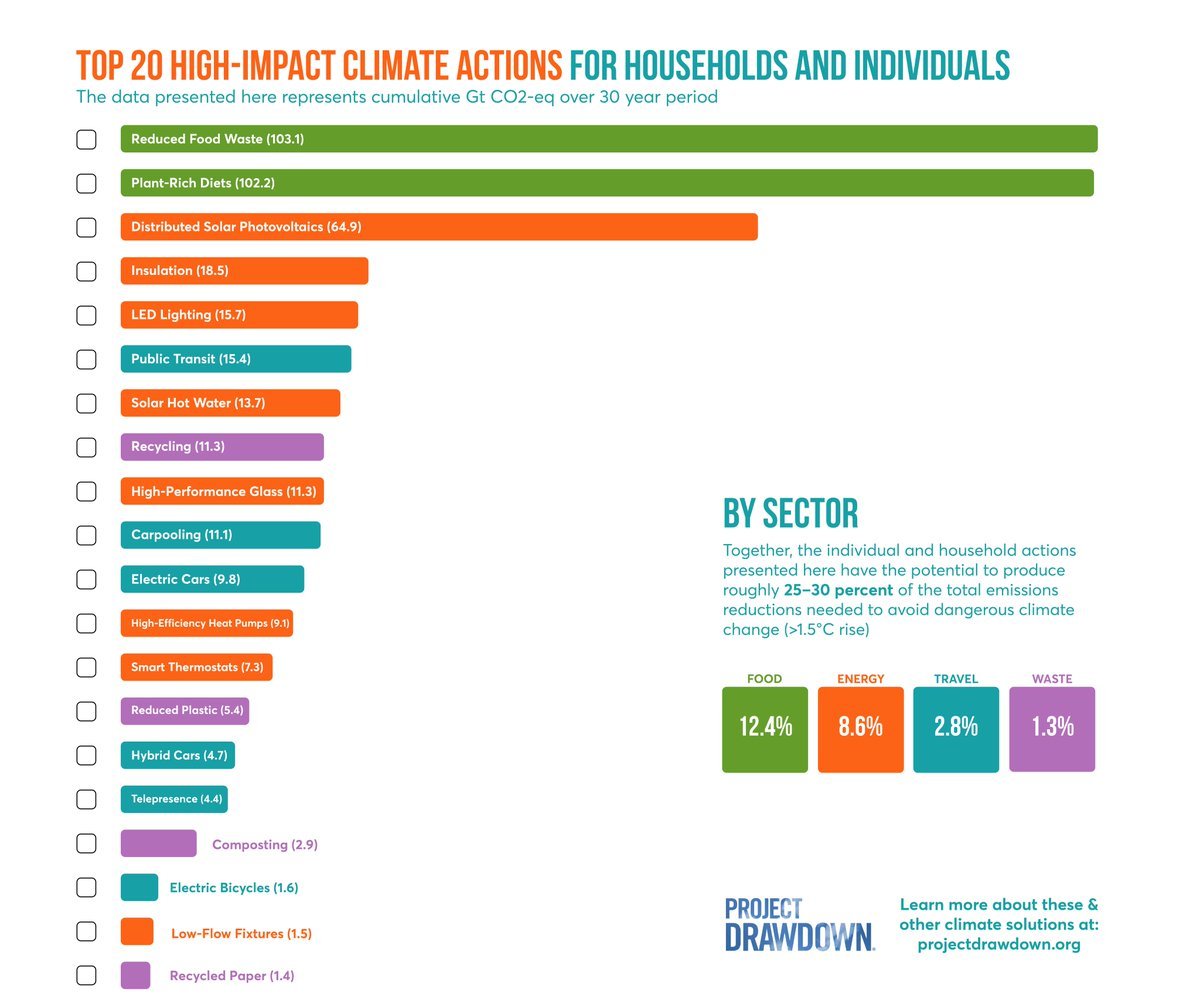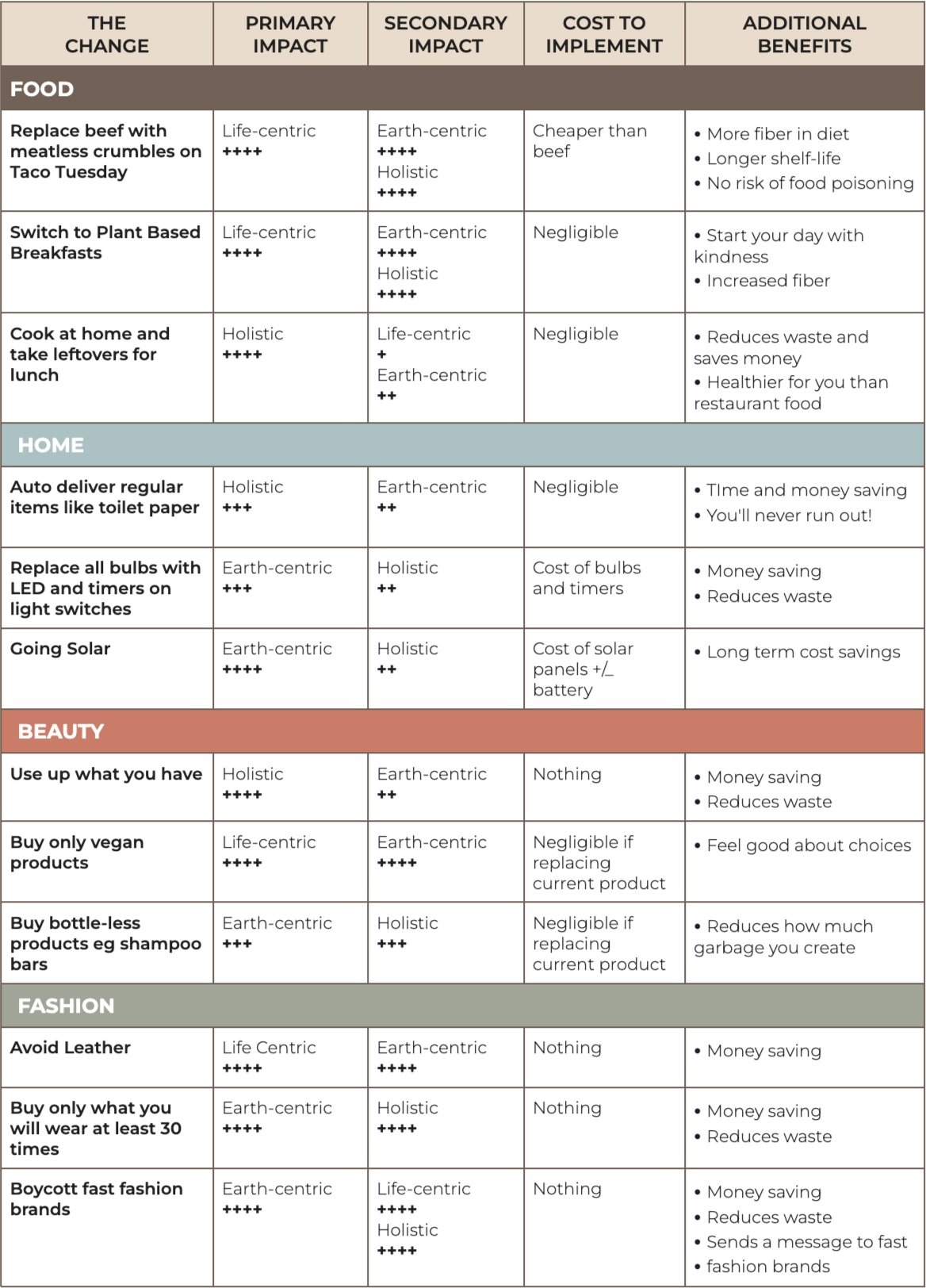So you want to start making changes for a more sustainable lifestyle and are trying to figure out how to do so?
Maybe this is a brand new concept for you and you are not sure where to start? Maybe you have been working on making changes and want to do more? Well then, please read on. This is a practical guide to help you determine which changes make sense for you!
The big picture.
When making changes for a more sustainable lifestyle, which actions have the most impact? Drawdown.org does a nice job of outlining where the biggest impact of each of these in the graph below.
They break it down into four main sectors, Food, Energy, Transportation and Waste. As you can see, food and energy are two of the most impactful changes since they are so ubiquitous in our daily lives.
How do you choose what action makes the most sense for your sustainable lifestyle?
In order to do this, ask yourself a few basic questions. This will help you determine which changes make the most sense for you.
What is your motivation?
What is “your why” behind wanting to make these changes? There are many reasons but some common ones are:
-
You are becoming more aware of things like carbon emissions and greenhouse gases and have started paying attention to the amount of plastic that you use. This may mean that your leading value is one of being earth-centered. Pay special attention to the earth-centered sections below and throughout the Kindhub posts.
-
Perhaps you have become aware that some of your choices impact people or animals negatively and you are ready to do something about it. This may mean that your leading value is one of being life-focused. Pay special attention to the life-focused sections below and throughout the Kindhub posts.
-
Perhaps you are aware that all these things matter and you really want a more general starting point. This may mean that your leading value is one of being more holistic. Pay special attention to the holistic sections below and throughout the Kindhub posts.
How much are you able to do?
Are you able to take a tiny step or a big step? Some people may want an overhaul? It’s important to be honest with yourself so you set yourself up for success. Sometimes it is better to start small and add on rather than take big bites and then drop off.
-
Some examples of approaches can be to make one small change every year (ie) be consistent with always carrying a water bottle and eliminate buying single use plastic water bottles).
-
Another option is focus on changing a category (ie) switching to renewable energy by changing to solar electricity and electric cars OR going vegetarian
-
A major overhaul, could include hiring a sustainability consultant to audit all of your habits
You get to set your pace and if you are able to make big changes, by all means go for it!
Who else is involved in helping make this change?
Are there kids and a spouse or partner involved? Be sure to include them – talk with them, explain your why and come up with a plan that makes sense for the folks involved.
-
Once you get started, how will you keep yourself accountable? This is important especially for changes which require ongoing behavior change (ie) new dietary or shopping habits.
-
Include friends and family – telling others helps to normalize the change and often encourages others to join in
-
Use tools such as trackers or auto-order items to avoid falling into old habits
-
How will you celebrate success? This is just as important as starting. If you make a sustained change, how will you celebrate your success and keep going?
Now that you have thought about the why and what of your sustainable lifestyle, let’s explore some options to get started according to the life-centered vs earth-centered vs holistic approaches.
The change grid.
Final words…
Choosing a sustainable life does not have to be hard or complicated! Pick a value or an area where you want to have an impact. Then, within that, pick the highest impact that you can manage based on your lifestyle and your budget.
Let us know what ideas you try at info@kindhub.com!



